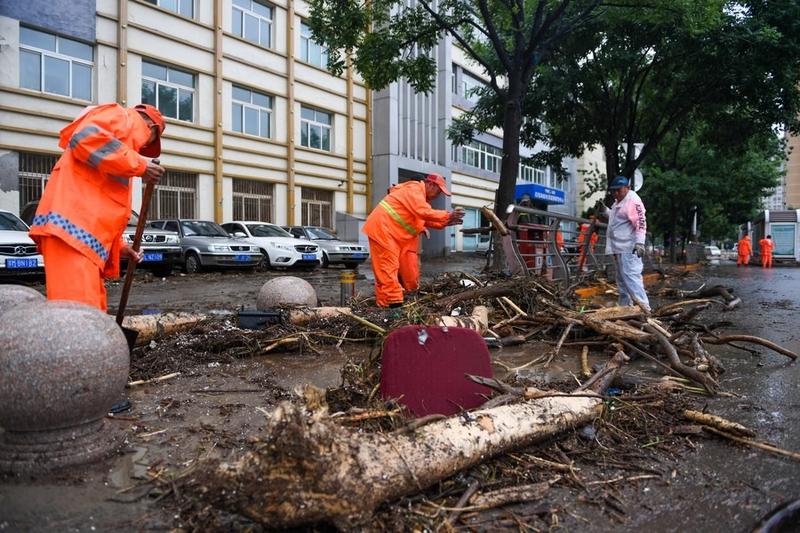 Sanitation workers clean up a street in flood-hit Mentougou district of Beijing, capital of China, July 31, 2023. (PHOTO / XINHUA)
Sanitation workers clean up a street in flood-hit Mentougou district of Beijing, capital of China, July 31, 2023. (PHOTO / XINHUA)
BEIJING - Beijing has recorded its heaviest rainfall over the past few days since records began 140 years ago.
Beijing has experienced spells of torrential rains brought by Typhoon Doksuri since the start of the weekend, which had caused 11 fatalities as of Tuesday morning
The city logged 744.8 millimeters of rain, the maximum amount of precipitation recorded during the rainstorm, between 8 pm Saturday and 7 am Wednesday at the Wangjiayuan reservoir in Changping district, the Beijing Meteorological Service said Wednesday.
ALSO READ: 11 dead, 27 missing in rainstorms in Beijing
The Chinese capital has experienced spells of torrential rains brought by Typhoon Doksuri since the start of the weekend, which had caused 11 fatalities as of Tuesday morning.
The city lifted the red alert for flood on Wednesday morning as the water flow in major rivers has gone below the warning mark.
 An excavator removes debris and litter from a bridge in Shuiyuzui village in flood-hit Mentougou district, Beijing, capital of China, Aug 1, 2023. (PHOTO / XINHUA)
An excavator removes debris and litter from a bridge in Shuiyuzui village in flood-hit Mentougou district, Beijing, capital of China, Aug 1, 2023. (PHOTO / XINHUA)
Also on Wednesday, China's Ministry of Water Resources launched a level-IV emergency response for flood control in the Inner Mongolia Autonomous Region and the provinces of Heilongjiang, Jilin and Liaoning.
From Wednesday to Friday, heavy rains are expected to lash most parts of the Songhua and Liaohe river basins, with water levels in some areas expected to exceed the warning marks, the ministry said.
ALSO READ: China steps up flood control work in North, Northeast China
The ministry has issued notices to local water resources departments and urged them to timely update on the changing rain and flood situations, and refine flood-control responses accordingly.
China has a four-tier flood-control emergency response system, with Level I being the most urgent response.


